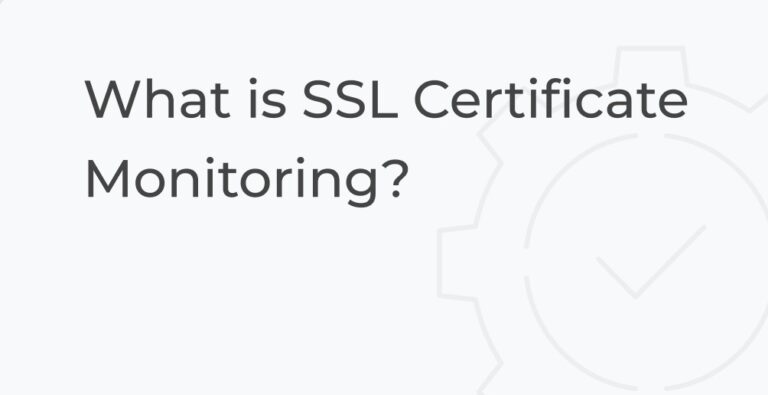In today’s digital age, ssl monitoring ensuring your website is secure is not just about maintaining a good reputation—it’s essential for protecting your visitors’ data. One key element of website security is the SSL certificate. However, even if you have one, there are times when your SSL certificate may require immediate attention.
Why SSL Certificates Matter
ssl monitoring encrypt the data exchanged between a website and its visitors, ensuring sensitive information like passwords and credit card numbers is transmitted securely. If an SSL certificate is compromised or not properly managed, it can expose your website to various risks, including data breaches and loss of trust from your users.
1. Your Website Displays “Not Secure” in the Browser
One of the most apparent signs that something is wrong with your SSL certificate is when browsers start displaying a “Not Secure” warning. This warning can scare visitors away and damage your site’s credibility. It usually indicates that your SSL certificate has expired, is incorrectly installed, or is using outdated encryption methods. Immediate action is required to restore the trustworthiness of your site.
2. Your Certificate Is Near Expiration or Has Expired
SSL certificates have a limited lifespan, usually lasting between one to two years. If your certificate is about to expire, you may start receiving notifications. Ignoring these can result in an expired SSL, which will lead to browsers warning users about the potential insecurity of your site. Always renew your certificate before the expiration date to avoid these warnings and potential security vulnerabilities.
3. Mixed Content Errors
Even if you have an SSL certificate installed, your website may display a “mixed content” warning. This happens when parts of your site, like images, scripts, or iframes, are loaded over an unencrypted HTTP connection while the main site is served over HTTPS. Mixed content weakens the security of your site, making it vulnerable to attacks. Addressing these issues requires a review of your website’s content and ensuring everything is served securely.
4. SSL Handshake Failures
An SSL handshake failure is a technical error that occurs during the process of establishing a secure connection between the server and the client. This issue can arise for several reasons, including outdated browser settings, incompatible SSL versions, or misconfigurations on the server. If you encounter SSL handshake failures, it’s crucial to diagnose the problem quickly to prevent disruption of service and loss of user trust.
5. Changes in Website Traffic or SEO Rankings
A sudden drop in traffic or a noticeable decline in your SEO rankings can be an indirect sign that something is wrong with your SSL certificate. Search engines like Google prioritize websites with valid SSL certificates, and an expired or misconfigured SSL can result in lower rankings. Additionally, if visitors see security warnings, they are likely to abandon your site, which will directly impact your traffic.
Conclusion
SSL certificates are a critical component of any secure website, but they require ongoing attention and management. If you notice any of the signs mentioned above, it’s time to take immediate action. Regularly monitoring and updating your SSL certificate can help ensure your website remains secure, trustworthy, and optimized for performance.

